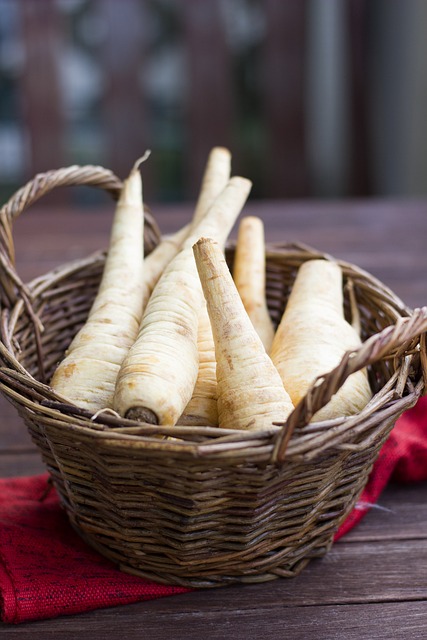 Parsnip
Parsnip
Searcy, Ark. –
Parsnip is a hardy, full season annual plant grown for its long, tapered root that resembles a white carrot. It is considered a winter vegetable, because its flavor is not fully developed until the roots have been exposed to near freezing temperatures for two to four weeks in the fall and early winter. The starch in the parsnip roots then changes to sugar, resulting in a sweet, nutlike flavor.
Plant seed in early March or August in a deep, well prepared, fertile soil. Parsnip seed is short lived. You must obtain a fresh supply each year. The best parsnips are grown in the fall.
Plant seeds 1/2 to 3/4 inch deep. To assure a good stand, plant two to three seeds per inch of row. Space rows 18 to 24 inches apart. Parsnip seed is slow to germinate, and some gardeners drop a radish seed every inch to mark the row and help break the soil crust. Thin seedlings to 2 to 4 inches apart. When the plants are too far apart, the roots become large and the edible portion develops a woody, fibrous texture.
Parsnip is closely related to carrots and is grown in a similar manner. Keep young parsnip plants free of weeds by shallow hoeing or cultivation.
Parsnip should remain in the ground until the tops freeze in late fall. At this time, the roots may be harvested and stored or left in the garden to be used as needed. Gardeners who do not have storage facilities often mulch parsnip with straw so it can be harvested throughout the winter. Like beets and carrots, parsnip may be stored in outdoor vegetable pits or underground cellars or under refrigeration at 32 degrees F with high (95 percent) humidity. Dig the roots (usually 1 1/2 to 2 inches in diameter and 7 to 8 inches long) with a spading fork. Yields frequently exceed 1 pound per foot of row. Low soil fertility is a common problem. It can usually be overcome by side dressing with a complete fertilizer in late May or October. Parsnip is relatively free of both insects and diseases.
Recommended cultivars:
- All American - Smooth, white roots; broad at the shoulders and hollow crowned. Excellent keeper.
- Hollow Crown - Long, well tapered roots, up to 18 inches long.
- Andover - Brown canker (resistant) - Slim, gradually tapered, firm root. Keeps four to six months.
- Javelin Hybrid - Brown canker (resistant) - Slim, smooth, tapered roots.
- Harris Model - Longer, slimmer roots than ‘Hollow Crown.’ Smooth, white roots with tapered shape.
- Gladiator Hybrid - Large, ‘Hollow Crown’ type; smooth, white skin with vigorous tops and rounded shoulders. Excellent taste, very sweet. Stores four to five months.
For more information you can contact your local county extension service, you can also follow Sherri Sanders on Facebook @UAEX.WhiteCountyAgriculture .
By Sherri Sanders
County Extension Agent - Agriculture
The Cooperative Extension Service
U of A System Division of Agriculture
Media Contact: Sherri Sanders
County Extension Agent - Agriculture
U of A Division of Agriculture
Cooperative Extension Service
2400 Old Searcy Landing Road Searcy AR 72143
(501) 268-5394
ssanders@uada.edu
The Arkansas Cooperative Extension Service is an equal opportunity institution. If
you require a reasonable accommodation to participate or need materials in another
format, please contact your County Extension office (or other appropriate office)
as soon as possible. Dial 711 for Arkansas Relay.
Pursuant to 7 CFR § 15.3, the University of Arkansas System Division of Agriculture
offers all its Extension and Research programs and services (including employment)
without regard to race, color, sex, national origin, religion, age, disability, marital
or veteran status, genetic information, sexual preference, pregnancy or any other
legally protected status, and is an equal opportunity institution.